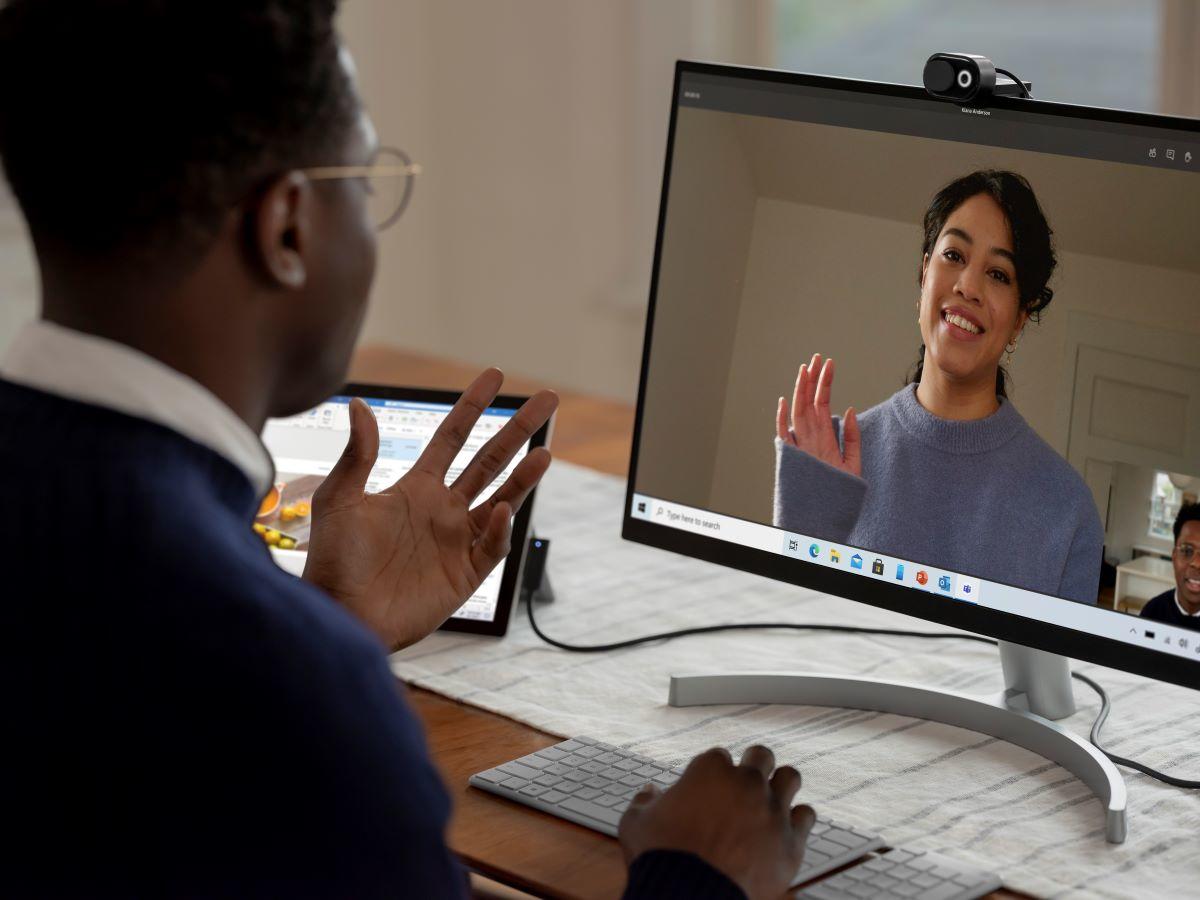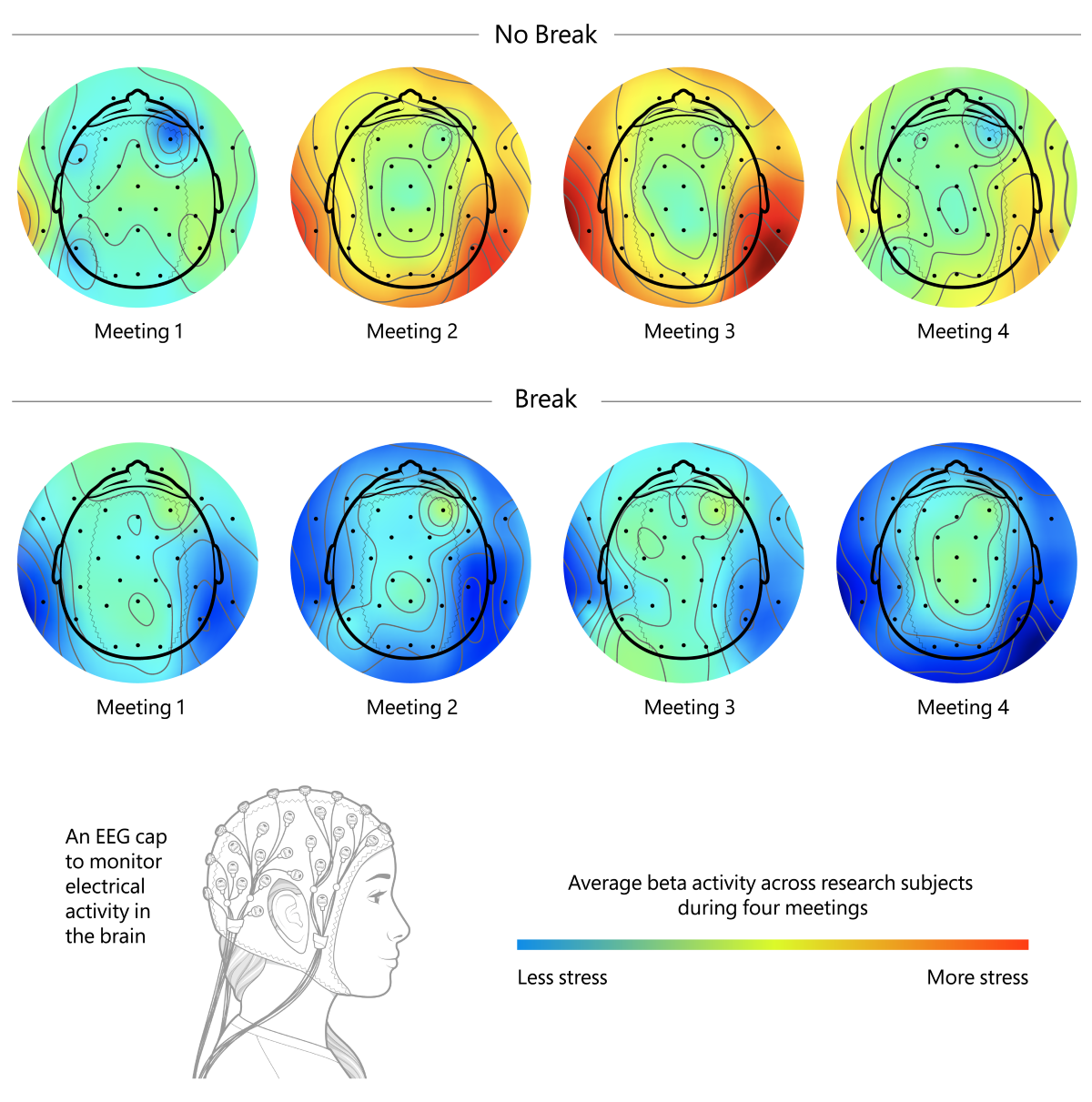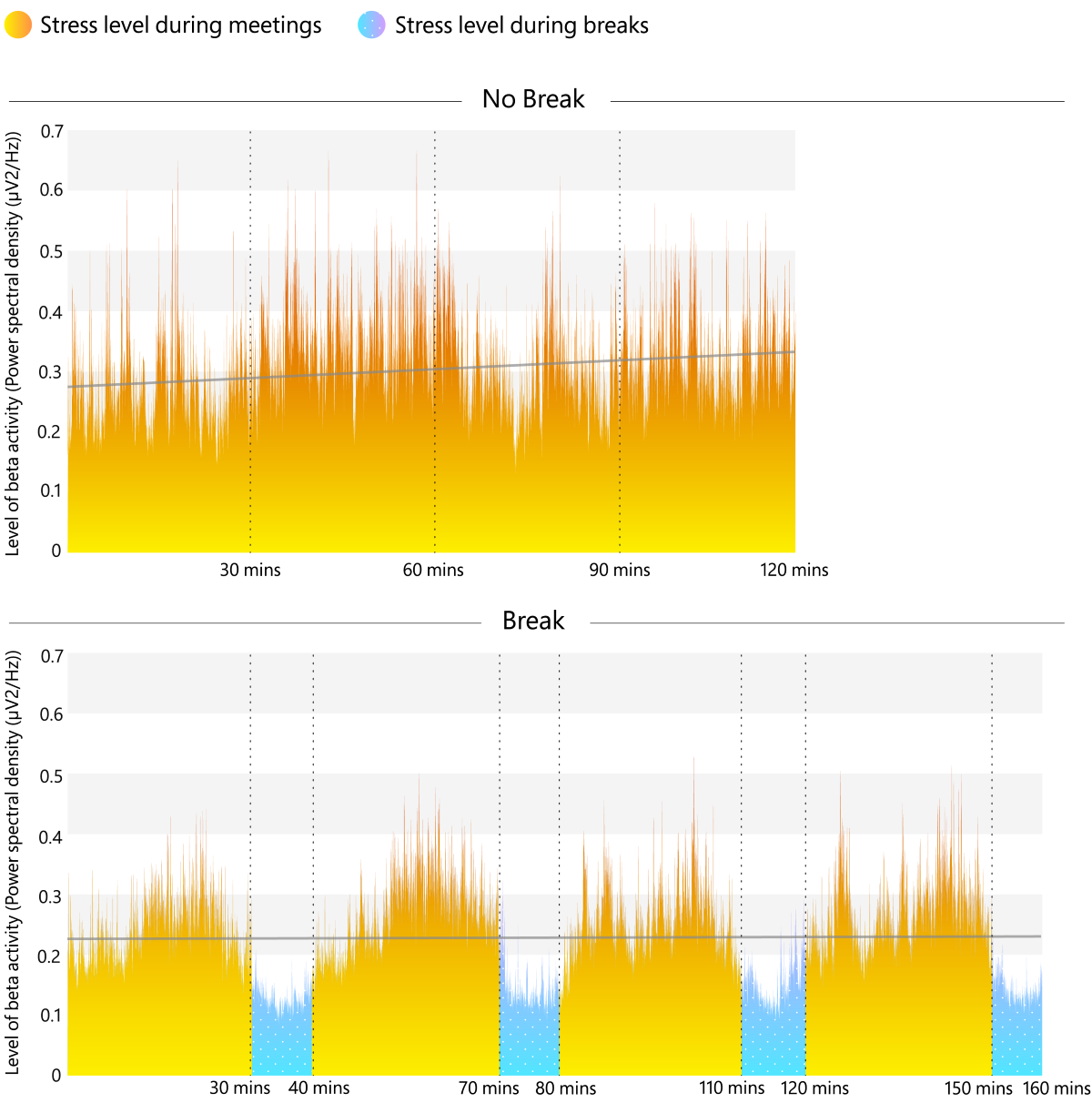
Even a five-minute break between two calls can go a long way in reducing the accumulation of stress.
Image: MicrosoftJumping from one videoconference to the next without a break is causing high levels of stress for users, on top of affecting focus and engagement during the meeting, according to a new study carried out by Microsoft.
The researchers examined the impact of back-to-back meetings on users’ brain waves and found that even a five-minute break between two calls could go a long way in reducing the accumulation of stress throughout the day.
With the majority of employees switching to remote working this past year, what was previously office-based interactions have now been taken online – and for many, this has led to calendars littered with Teams catch-ups and Zoom calls, often with little time to breathe between two meetings.
Microsoft previously found that the past few months have seen a 30% increase in scheduled meetings across Microsoft 365, and a 1,000% jump in video calls.
The impact of what is now known as “digital overload” on mental health is becoming well-documented. Microsoft’s most recent Work Trend Index, published last month, shows that the majority of respondents (54%) feel overworked; and a whole 39% of employees describe themselves as outright exhausted.
The Human Factors Lab, a research department within Microsoft that is dedicated to studying how humans interact with technology, has already examined the physical impact that remote meetings have on users’ brains.
Last summer, the lab’s researchers fitted users with electroencephalograms (EEGs), which monitor electrical activity in the brain, and asked them to complete certain tasks in-person and remotely, to look at how different settings affected brainwaves. They found that several factors, including focusing continuously on the screen or having to decipher reduced non-verbal cues to communicate, were generating more brainwave markers associated with overwork and stress.
Off the back of those findings, the researchers set off to find out more about the consequences of having back-to-back remote meetings without breaks. A team of 14 volunteers took part in video meetings while wearing EEGs, and their brainwaves were studied during two different sessions of meetings.
On one day, the volunteers attended four 30-minute meetings back-to-back, with each call devoted to different tasks, such as designing an office layout or creating a marketing plan. On the second session, the four meetings were interspersed with ten-minute breaks, during which the participants were assigned a downtime activity – in this case, to use meditation app Headspace.
The results were clear. In two straight hours of back-to-back meetings, the brainwaves associated with stress – called beta waves – accumulated over time. On the other hand, beta waves dropped during breaks, acting like a “reset” that stabilized the average level of beta activity, and therefore of stress, throughout the four meetings.

Beta waves dropped during breaks, acting like a “reset” that stabilized the average level of beta activity.
Image: MicrosoftMicrosoft’s researchers also looked at a brainwave pattern called frontal alpha asymmetry, which reflects whether someone is engaged or withdrawn. They found that when they were able to take a break between meetings, users were more engaged and focused during their calls, whereas those who jumped between meetings without resting tended to be withdrawn, potentially as a result of stress.
“Our research shows breaks are important, not just to make us less exhausted by the end of the day, but to actually improve our ability to focus and engage while in those meetings,” says Michael Bohan, senior director of Microsoft’s Human Factors Engineering group, who oversaw the project.
The study also allowed the scientists to pinpoint the moments that seem most stressful in a meeting: for the participants deprived of breaks, stress levels spiked during the transition period between calls.
“You’re coming to the end of the meeting, knowing you have another one coming right up, and you’re going to have to switch gears and use your brain to think hard about something else,” Bohan says.
Once more, participants who took breaks were able to transition more smoothly as a result of beta activity dropping during the time they took to meditate.
The takeaway seems straight-forward, therefore: breaks, even short ones, can help alleviate the stress linked to meeting overload.

Participants who took breaks were able to transition more smoothly as a result of beta activity dropping.
Image: MicrosoftLast year, Microsoft introduced a setting that lets users schedule meetings to automatically conclude five, ten or 15 minutes before the end of the hour or half hour, to carve out breaks between conversations. The company is now extending the feature, so that businesses can set organization-wide defaults that shorten meetings for breaks.
Via PowerShell, company admins can choose to automatically introduce a time for a break at the beginning or end of meetings, for example shortening all 30-minute meetings by five minutes, and all hour-long meetings by ten minutes. Once the setting is enabled, all meetings scheduled by employees will be adjusted accordingly.
Individuals will be able to change or customize the setting at their convenience, and the company-wide policy will not override users’ preferences if they have already created their own set-up for breaks.
Microsoft’s researchers, however, warned against breaks that become an opportunity to do more work. “Try not to use that five or ten minutes to squeeze in some other kind of work,” Bohan says. “Catch your breath and take a break away from your screen.” Doodling or reading something enjoyable, for example, are a better way of resting the brain.
Later this month, Microsoft will also be releasing new wellbeing features in Microsoft Viva, the employee experience platform that the company launched earlier this year. Users will be able to set up a “virtual commute,” for example, to help them wrap up their tasks at the end of the workday and transition into personal time.






















